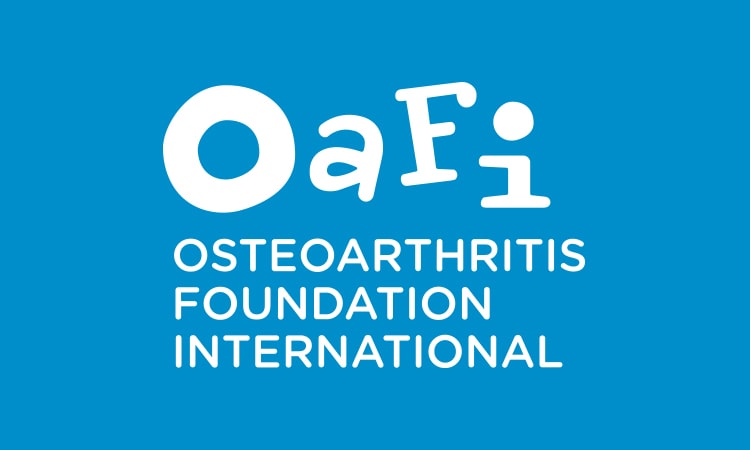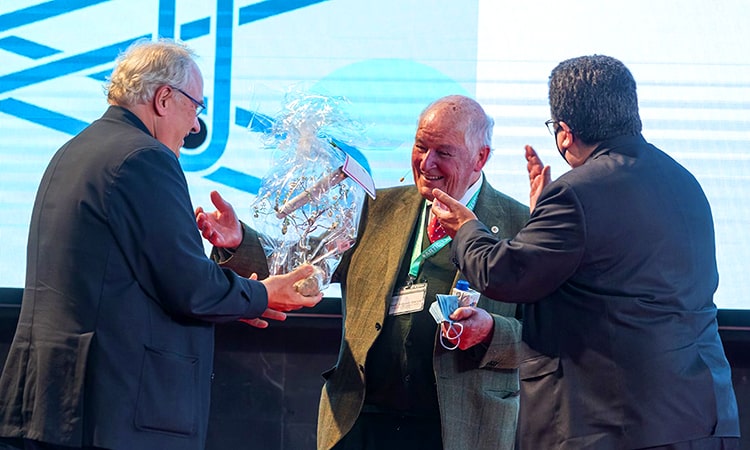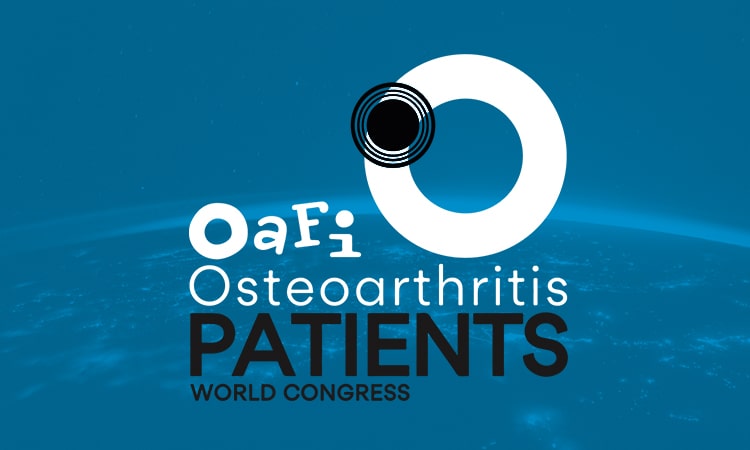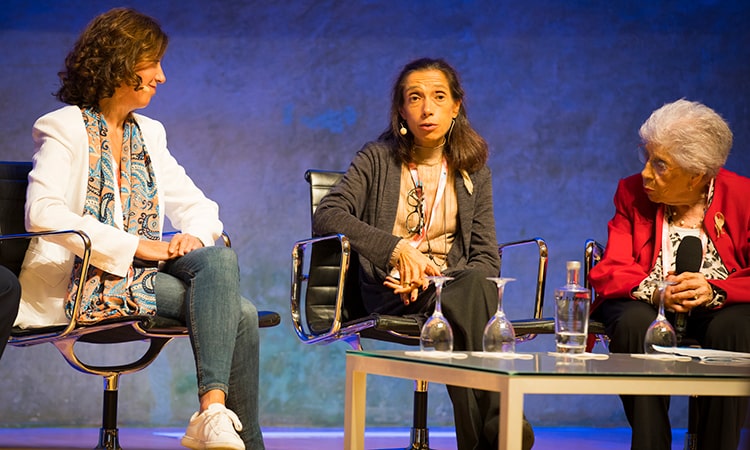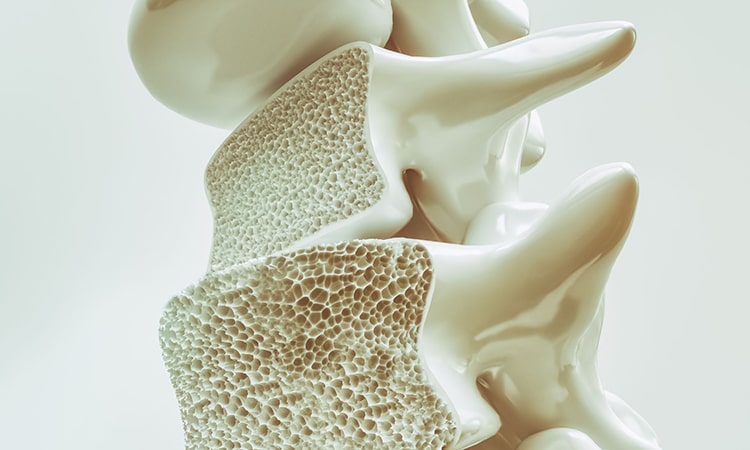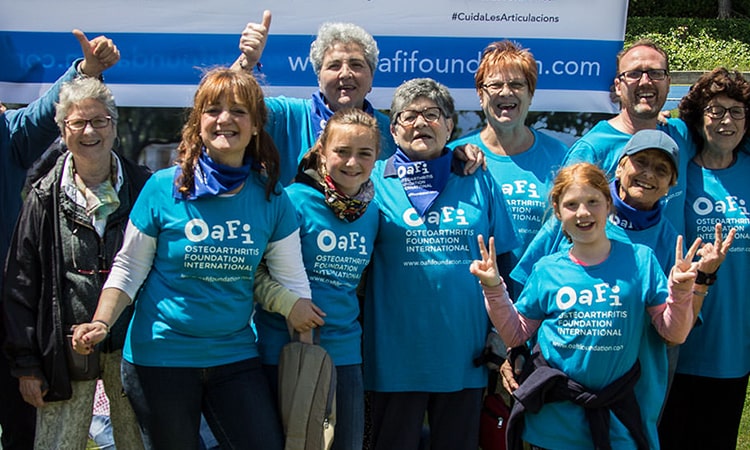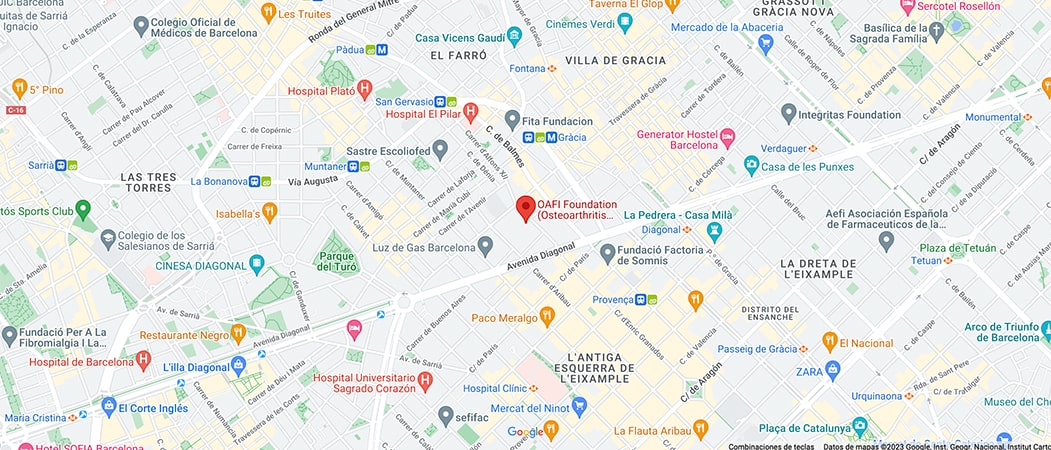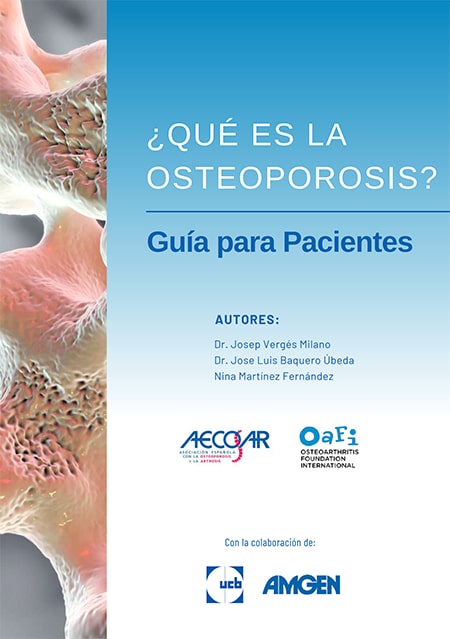- Foundation
- Actions
- Osteoarthritis
- Osteoporosis
- Actuality
- OAFI Radio/TV
- Get Involved
- Contact
-
-
-
OAFI
Osteoarthritis International FoundationC/ Tuset, 19 · 3º 2ª
08006 Barcelona
(+34) 931 594 015
info@oafifoundation.comSchedule:
Monday-Thursday 9AM-6PM
Friday 8AM-3PM
-
-
-

-

-

WHAT IS OSTEOPOROSIS?
Bones are constantly being renewed. When we are young, the formation of new bone outpaces the breakdown of existing bone. However, as we age, bone mass begins to decrease and the process of bone formation slows down.
Osteoporosis
Osteoporosis is a chronic and progressive disease that causes bones to become more porous, fragile, and weak, making those who suffer from it more likely to experience an osteoporotic fracture, quadrupling the risk compared to a person with healthy bones.
In the early stage of osteopenia, where this bone weakness is already evident, the risk of fracture doubles, and in fact, almost half of unexpected fractures occur at this stage.
The symptoms
Osteoporosis is known as a silent disease because it usually doesn’t cause symptoms until a fracture occurs. Even when this happens, some fractures may not cause pain, so they often go unnoticed.
millones de personas afectadas en el mundo
0
millones de personas en España
0
millones de fracturas por fragilidad cada año en Europa
0
fractura por fragilidad cada 2 minutos en España
0
de personas que han sufrido una fractura carece de diagnóstico
0
%
de las personas que la sufren son mujeres
0
%
The figures
It is estimated that more than 500 million people worldwide suffer from this condition, which is especially common in postmenopausal women due to decreased hormone levels, such as estrogen, which has a protective role in bone metabolism.
Global population aging is causing a significant increase in the incidence of osteoporosis, with alarming projections for the future. In Europe, 4.3 million fragility fractures occur each year, and it is predicted that by 2050, the number of fractures could increase by up to 50% due to this demographic factor. In Spain, it is estimated that a fragility fracture occurs every two minutes.
A fragility fracture, in severe cases, can lead to death (20-30% in the first year after the fracture) and only 40% recover their original quality of life.
Social Impact
The rise in osteoporosis cases poses a significant challenge to healthcare systems. Hip fractures, in particular, stand out due to their severity, associated with high morbidity and mortality, and generating a heavy economic burden at both the individual and societal levels.
Furthermore, the frequent comorbidity (cardiovascular, diabetes, hypertension…) of osteoporosis leads to high polypharmacy, which increases healthcare spending and exposes the patient to a greater risk of medication errors or lack of adherence.
At OAFI, research and development are an essential part of our mission. Our R&D department She dedicates part of her work to studying the quality of life of people with osteoporosis, with the aim of improving their well-being and quality of life.
Furthermore, we actively collaborate in clinical trials and the development of new treatments, contributing a unique value: the patient’s voice and experience. This perspective is key to designing more effective, accessible therapies focused on the real needs of those living with musculoskeletal conditions.
This work is reinforced by the development of OAFI Lab, a new space that will expand our scientific and technological capabilities, consolidating our role as a benchmark in the field of osteoarticular health.
Do you have a project focused on osteoporosis research or treatment? At OAFI, we can contribute the patient's voice and experience.
#CuidadOsteoporosis
¿QUÉ ES LA OSTEOPOROSIS? | ESTUDIO ODPAR
¿QUÉ ES LA OSTEOPOROSIS? | ESTUDIO ODPAR
Todo lo que debes saber sobre osteoporosis
Help us improve the quality of life of Osteoarthritis patients.
BECOME A PARTNER
Help us improve the quality of life of osteoarthritis patients by becoming a partner.
BECOME A VOLUNTEER
The patient is the reason for being OAFI, become a volunteer and help us improve their quality of life.
MAKE A DONATION
Your help is very important to us, with it we can finance our founding work.
CONTACT
-
C/ Tuset, 19 · 3º 2ª
08006 Barcelona - (+34) 931 594 015
- info@oafifoundation.com
-
From Monday to Thursday
from 9AM to 6PM
Friday from 8AM to 3PM
The Foundation
Other Links
The OAFI mascot, called OAFITO, was created exclusively and altruistically by the artist Xavier Mariscal.
